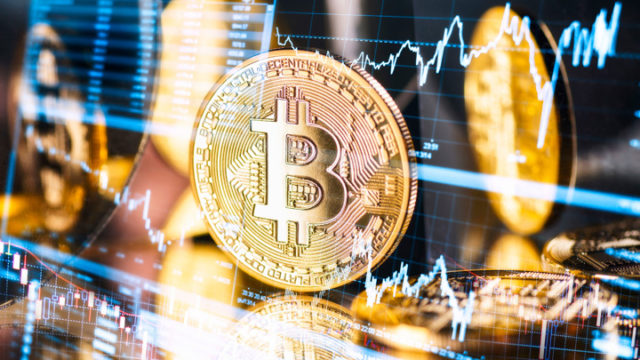- The recovery in the price of Gold stopped after the publication of data on retail sales and the US Producer Price Index (PPI).
- US retail sales contracted at a slower pace of 0.1%, versus estimates for a 0.3% decline.
- The monthly PPI contracted a surprising 0.5%, while economists were forecasting a 0.1% increase.
The price of Gold (XAU/USD) is facing selling pressure after a slower-than-expected decline in US retail sales data for October. Monthly retail sales fell 0.1% versus expectations for a 0.3% contraction. In September, the economic data rose 0.7%.
The monthly Producer Price Index (PPI) of the United States registered the largest decrease in October since April 2020, due to a significant drop in gasoline prices. In the same period, the underlying PPI remained stagnant.
Overall demand for the precious metal remains optimistic as easing price pressures in the US economy have dampened expectations of further tightening of monetary policy by the Federal Reserve (Fed). On Tuesday, the precious metal took advantage of the slow growth in US headline inflation, which slowed due to the sharp drop in gasoline prices. The weak US inflation data for October indicates that the current interest rates set by the Fed are adequate to reduce inflation to 2%.
The US dollar and bond yields have generally declined as the weak Consumer Price Index (CPI) has underpinned a boost in risk appetite. The decline in consumer and manufacturing inflation has increased investor confidence that the Federal Reserve will cut interest rates soon.
Daily Market Summary: Ogold Price Faces Fresh Pressure After US Data
-
The price of Gold aims to extend its recovery above $1,970, as the substantial decline in US consumer inflation in October indicates that the Federal Reserve is unlikely to raise interest rates further.
-
US inflation data for October, released on Tuesday, indicated that headline inflation slowed significantly. The annual headline CPI rose 3.2%, below estimates of 3.3% and the previous reading of 3.7%. It was the slowest growth in headline inflation in more than two years.
-
The sharp drop in global oil prices caused a significant decline in the overall inflation rate.
-
Rental prices continued to rise in October, but at a slower pace than in September. Food and grocery prices increased by 0.3%.
-
Monthly core inflation, which excludes volatile oil and food prices, rose 0.2%, compared to estimates – and September’s growth rate – of 0.3%. Annual core inflation increased by 4.0%, slowing compared to expectations and the previous publication of 4.1%.
-
Although core inflation fell more than expected, the pace of decline was nominal, indicating persistent rigidity. This remained a major concern for Federal Reserve policymakers last week, forcing them to lean toward further interest rate hikes.
-
Last week, Federal Reserve Chairman Jerome Powell commented that the central bank will not hesitate to tighten monetary policy further, as a failure to control inflation would be its biggest mistake.
-
Following the release of US inflation data, Federal Reserve Bank of Richmond President Thomas Barkin said at an event in South Carolina that core inflation was partly offset by supply shortages. .
-
Thomas Barkin added that the central bank is making real progress on inflation, but that he is not convinced that inflation is on a smooth path back to its 2% target (for core CPI). Barkin warned that the Federal Reserve must do more to curb demand and inflation.
-
The latest inflation figures have tipped the balance in favor of keeping interest rates unchanged by the Fed in the 5.25%-5.50% range. Economists expect that the Fed has ended interest rate hikes and that discussions about an interest rate cut are early.
-
The US Dollar Index DXY moves near two-month lows around 104.00 following the US Retail Sales release.
-
Monthly retail demand contracted at a slower pace of 0.1%, while economists had forecast a decline of 0.3%. In September, retail sales increased by 0.7%.
-
The decline in retail sales is mainly due to lower demand for cars, as rising interest rates impact households’ cost of living. Retail sales excluding autos rose 0.1%, while investors expected stagnation.
-
The US PPI for October fell at a faster pace due to falling gasoline prices. The monthly headline PPI was surprisingly deflated by 0.5% versus growth estimates of 0.1%. The year-on-year PPI data rose 1.3%, compared to expectations of 1.9% and the previous reading of 2.2%.
-
The monthly core PPI remained stagnant against the expected 0.3% growth. The annual core PPI rose 2.4%, below expectations and the previous reading of 2.7%.
-
Investors will be closely watching US President Joe Biden’s meeting with Chinese President Xi Jinping at the White House. Debates about the war between Israel and Palestine are highly anticipated.
-
Gains in Gold could be limited due to risk-on sentiment and easing tensions in the Middle East.
Technical analysis: The price of Gold falls and approaches $1,960
The price of Gold is approaching $1,960 after failing to stay above $1,970. On the daily chart, the precious metal resumed its bullish path after discovering significant buying interest near the 50-day exponential moving average (EMA). Gold price recovery has extended above the 20-day EMA, indicating that the overall appeal has turned extremely bullish.
Frequently asked questions about Gold
Why invest in Gold?
Gold has played a fundamental role in human history, as it has been widely used as a store of value and medium of exchange. Today, aside from its brilliance and use for jewelry, the precious metal is considered a safe-haven asset, meaning it is considered a good investment in turbulent times. Gold is also considered a hedge against inflation and currency depreciation, since it does not depend on any specific issuer or government.
Who buys more Gold?
Central banks are the largest holders of Gold. In their aim to support their currencies in turbulent times, central banks tend to diversify their reserves and purchase Gold to improve the perception of strength of the economy and currency. High Gold reserves can be a source of confidence for the solvency of a country. Central banks added 1,136 tons of gold worth about $70 billion to their reserves in 2022, according to data from the World Gold Council. This is the largest annual purchase since records exist. Central banks in emerging economies such as China, India and Turkey are rapidly increasing their gold reserves.
What correlation does Gold have with other assets?
Gold has an inverse correlation with the US Dollar and US Treasuries, which are the main reserve and safe haven assets. When the Dollar depreciates, the price of Gold tends to rise, allowing investors and central banks to diversify their assets in turbulent times. Gold is also inversely correlated with risk assets. A rally in the stock market tends to weaken the price of Gold, while sell-offs in riskier markets tend to favor the precious metal.
What does the price of Gold depend on?
The price of Gold can move due to a wide range of factors. Geopolitical instability or fear of a deep recession can cause the price of Gold to rise rapidly due to its status as a safe haven asset. As a non-yielding asset, the price of Gold tends to rise when interest rates fall, while rising money prices tend to weigh down the yellow metal. Still, most of the moves depend on how the US Dollar (USD) performs, as the asset is traded in dollars (XAU/USD). A strong Dollar tends to keep the price of Gold in check, while a weaker Dollar is likely to push up Gold prices.
Source: Fx Street
I am Joshua Winder, a senior-level journalist and editor at World Stock Market. I specialize in covering news related to the stock market and economic trends. With more than 8 years of experience in this field, I have become an expert in financial reporting.







